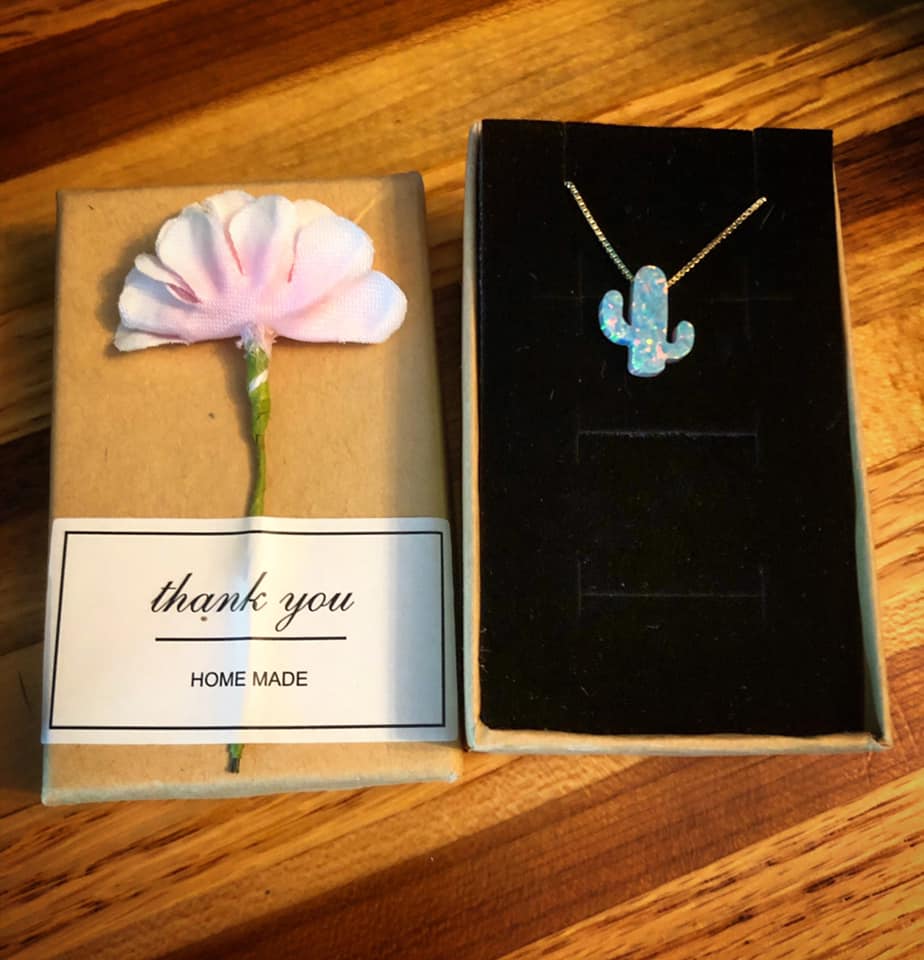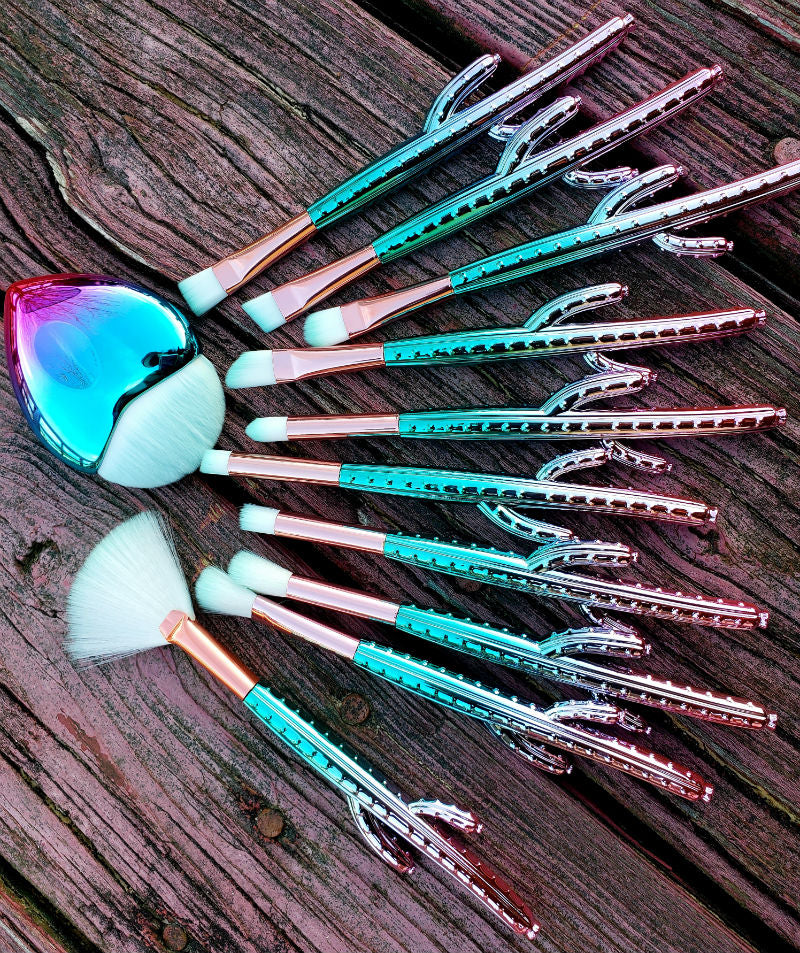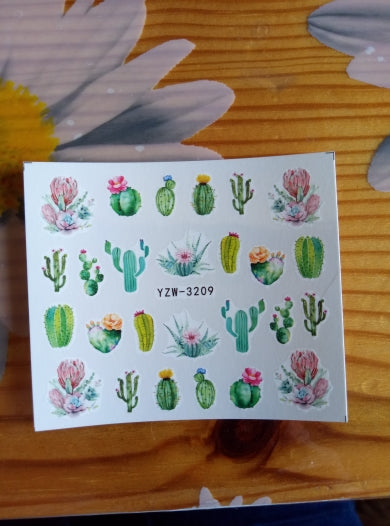Succulent Success: The Key Steps on How to Fertilize Succulents

Welcome to "Succulent Success: The Essential Guide to Feeding Your Cacti and Succulents"
In the colorful world of growing cacti and succulents, getting really good at feeding them is like finding a hidden stash of plant magic.
Here we explore the world of plant nutrition. Beneath their tough outer shells, cacti and succulents rely on a delicate balance of nutrients. As caretakers of these special plants, it's our job to learn all we can about how to fertilize succulents so they can thrive.
Come along as we uncover the secrets of fertilizer application techniques for your cacti and succulents, exploring the precise ways to apply fertilizer that leads to gardening success. From understanding what your plants need to mastering how to give it to them, each part of this adventure brings new insights.
So, fellow succulent lovers, get ready for a journey where every step brings you closer to thriving plants like never before!
Understanding Succulent Fertilization
Why do succulents need fertilizer?
Succulents, with their beautiful shapes and colors, are known for being tough in tough places. But even these strong plants need some extra food to grow well. Fertilizer gives them the important nutrients they might not get enough of naturally. It makes the soil better and helps the plants grow strong.
Nutritional requirements of succulents
Just like people need different foods to stay healthy, succulents have foods they need too. Even though they're good at growing in places with not many nutrients, giving them the right kinds of foods can make them even healthier and prettier.
Things like nitrogen, phosphorus, and potassium are really important for their growth. And there are other tiny nutrients like calcium, magnesium, and iron that help them stay strong and grow well.
Knowing what your succulents need to eat is super important for helping them grow well. When you give them the right mix of food that suits them, they'll be healthier and look even more beautiful. So, let's explore more about how to feed your succulents and learn how to help them reach their full potential.
Choosing the Right Fertilizer
Types of fertilizers suitable for succulents
Picking the perfect fertilizer for your succulents is super important to keep them healthy and strong. There are different kinds out there, each with its own special mix of nutrients that your plants value. You can choose from liquid fertilizers, slow-release granular ones, or water-soluble powders to give your succulents the nourishment they need.
Organic vs. synthetic fertilizers: pros and cons
Organic fertilizers, like compost, bone meal, and seaweed, are great for feeding your succulents in a gentle and eco-friendly way. They release nutrients slowly, which helps your plants grow steadily without any harm.
On the flip side, synthetic fertilizers have specific nutrient mixes that give your succulents a quick boost. But if you're not careful with how you use them, you might end up giving your plants too much, which can cause problems.
Factors to consider when selecting a fertilizer
When picking out a fertilizer for your succulents, there are a few things to think about. Look for one with a low amount of nitrogen to avoid too much leafy growth.
It's best to go for fertilizers made just for succulents or cacti because they have the right mix of nutrients. Also, make sure the fertilizer has a balanced pH so your plants can soak up the nutrients properly.
By thinking about these things, you can pick a fertilizer that gives your succulents what they need to grow well without overdoing it. This helps make sure your plants stay healthy and happy for a long time.
Timing and Frequency of Fertilization
Best times to fertilize succulents
When you fertilize your succulents matters a lot. It's best to do it when they're growing the best, usually in spring and summer. That's when they're making new leaves and stems and can use the extra nutrients from the fertilizer the most.
How often should you fertilize?
How often you give your succulents fertilizer depends on different things like what type of fertilizer you use, how fast your plants are growing, and the environment they're in.
A good rule is to give them fertilizer less often, like every 2-4 weeks during the growing season. And when you do, make it little weaker than the instructions say you can avoid giving them too much.
Adjusting fertilization frequency based on season and growth stage
Make sure to change how often you give your succulents fertilizer depending on the time of year and how much they're growing.
In the winter, when they're not growing much, you can give them less or even stop for a while. But when it's spring and summer, and they're growing a lot, you'll want to give them fertilizer more often to help them grow strong and healthy.
Knowing when and how often to fertilize your succulents is super important. It helps them get all the nutrients they need without risking over-fertilization or nutrient deficiencies.
By changing how often you fertilize based on the time of year and how fast your succulents are growing, you can keep them healthy and strong all year long.
By understanding the optimal timing and frequency of fertilization, you can ensure that your succulents receive the nutrients they need to thrive without risking over-fertilization or nutrient deficiencies.
Adjusting fertilization practices based on seasonal changes and growth stages will help maintain the health and vitality of your succulent collection year-round.
Preparing Succulents for Fertilization
Signs that your succulents need fertilizer
Before you start fertilizing your succulents, it's important to know when they need a little extra nutrition. Watch out for signs like pale or yellow leaves, slow growth, or dull colors.
If your succulents aren't growing new leaves or look a bit sickly, it's probably time to give them some fertilizer to help them grow strong and healthy.
Pre-fertilization care tips for healthy plants
For the best outcomes when fertilizing, make sure your succulents are well-cared-for before you start. This means giving them enough sunlight, watering them correctly, and ensuring they have good airflow.
Healthy succulents can absorb and use nutrients from fertilizers better, so keeping them healthy is important for successful fertilization.
Soil preparation: ensuring the right environment for fertilization
Before you add fertilizer, get the soil ready so it can handle the nutrient absorption well. Make sure the soil drains water properly and has enough air by adding things like perlite or coarse sand.
This helps prevent the soil from getting too wet, which can cause root rot and make it hard for the succulents to get the nutrients they need.
If you notice your plants look like they need more nutrients, take care of them before adding fertilizer.
Make sure the soil is ready to soak up the nutrients by giving it some TLC and checking for any signs of nutrient problems. This helps make sure your succulents stay healthy and strong when you fertilize them.
Applying Fertilizer Properly
Techniques for applying fertilizer to succulents
How you put fertilizer on your succulents can really affect how well they grow. It's best to use a weak fertilizer mix to avoid giving them too much food all at once. Put the fertilizer right onto the soil near the plant's base, being careful not to get any on the leaves, which could harm them.
Dos and don'ts of fertilizing succulent plants
To make sure your succulents grow well after fertilizing, here are some fertilizer dos and don'ts.
Do follow the instructions on the fertilizer label and dilute it properly to avoid burning your plants with too much fertilizer.
Don't put fertilizer on dry soil because it can mess up the nutrients and hurt the roots. Instead, give your succulents a little water before adding fertilizer to help them soak up the nutrients better.
Avoiding common mistakes in fertilizer application
When fertilizing your succulents, watch out for mistakes that could harm them. Don't fertilize them when they're not growing much, like during their rest time or when the weather is extreme. They won't be able to use the nutrients well during these times.
Also, wait to fertilize newly potted or repotted succulents until they've settled in and their roots have adjusted to their new home.
By learning how to fertilize properly, sticking to what works, and steering clear of common errors, you can keep your succulents healthy and their leaves colorful.
Watering After Fertilization
Importance of watering routines post-fertilization
Once you've given your succulents their nutrient absorption boost, keep an eye on how you water them. Water helps the roots soak up those nutrients from the soil, keeping your succulents healthy and happy.
Stick to a regular watering routine after fertilizing to make sure your plants get the right amount of water and nutrients they need to stay strong.
Tips for watering succulents after fertilizing
After you fertilize your succulents, water them carefully. You want the soil to be a little damp, but not too wet. Too much water can cause problems like root rot.
So, give your succulents just enough water, and let the soil dry out a bit between waterings. Try using a watering can with a thin spout to water the soil directly around the plants, avoiding getting water on their leaves.
Balancing hydration and nutrient absorption
Getting the balance right between water and nutrient uptake is vital for your succulents to benefit from fertilization. Water helps carry the nutrients to the roots, but don't go overboard.
Keep an eye on how damp the soil is and adjust how often you water depending on things like how hot or humid it is. By getting the balance just right, you'll help your succulent health and growth stay strong.
Observing Succulent Response
Signs of over-fertilization in succulents
Giving your succulents too much fertilizer can harm them. Watch for signs like yellow or droopy leaves, slow growth, or burnt edges on leaves.
These signs suggest your succulents are getting too many nutrients, messing up their insides. If you see any of these signs, change how often you fertilize to protect your plants from more damage.
Spotting plant nutrition shortages and their solutions
If your succulents don't get enough nutrients, they can suffer. Look for signs like pale or odd-colored leaves, slow growth, or leaves dropping.
Check your plants closely to see what they're missing. Then, you can help by adjusting how you fertilize them or by giving them more of the nutrients they need.
Adjusting fertilization based on plant response
Keeping an eye on how your succulents respond to fertilizing is super important for keeping them healthy. Watch closely to see how they react to different fertilizers and ways of applying them.
If you see your plants doing well and growing nicely after fertilizing, you can stick with what you're doing. But if you notice any problems or signs that they're not getting the right nutrients, be ready to switch things up.
By staying alert and adjusting to what your succulent care needs, you can make sure they stay happy and beautiful.
Organic Fertilization Methods
DIY organic fertilizers for succulents
Making your own organic fertilizers for succulents is a fun and eco-friendly way to feed your plants. You can whip up effective fertilizers using stuff you probably already have at home, like compost, worm castings, and seaweed extract.
These natural goodies give your succulents all the nutrients they need and help make the soil healthier with good bacteria. Try out different mixes until you find the one your plants love best, and feel good knowing you're giving them exactly what they need to thrive.
Natural preferences to commercial fertilizers
Even though store-bought fertilizers are easy to use, you can get similar good stuff from natural options without any synthetic chemicals.
Try adding things like alfalfa meal, fish emulsion, or bone meal to your fertilizing routine for your succulents. These natural fertilizers are gentle but still give your plants the nutrients they need for healthy leaves and strong roots.
Using natural alternatives is not just good for your plants but also for the environment.
Benefits of organic fertilization for succulent health
Using organic fertilizers has a lot of good points for your succulents. Unlike synthetic ones that can mess up the balance of nutrients in the soil over time, organic fertilizers give your plants a slow but steady supply of nutrients they can use right away.
This helps them grow evenly and reduces the chance of giving them too much fertilizer, making them tougher and healthier.
Also, organic fertilizers keep the soil healthy by supporting a bunch of tiny living things that help your plants grow better. Going for organic methods is a natural and eco-friendly way to take care of your succulents, making sure they stay healthy and beautiful for a long time.
Synthetic Fertilization Methods
Understanding synthetic fertilizers and their ingredients
Synthetic fertilizers are human-made products made to give plants certain nutrients. They usually have a mix of nitrogen, phosphorus, and potassium, plus other small nutrients plants need. These fertilizers work fast and well, which is why lots of people use them in gardening.
But it's essential to know what's in synthetic fertilizers and how they can affect your succulents, so you use them right and don't give too much.
Synthetic fertilization schedules and usage methods
When you use man-made fertilizers on your succulents, it's important to stick to a regular schedule to avoid giving them too much or too little food.
These fertilizers usually come with instructions on how often to use them and how much to apply, custom to what your plants need. Usually, it's best to give your succulents a weaker mix of fertilizer every couple of weeks when they're growing. Then, you can give them a break from fertilizer when they're not growing much.
Following these instructions keeps the soil healthy and helps your succulents grow well without harming them with too much fertilizer.
Tips for enhancing the effectiveness of synthetic fertilizers
For the best results when using man-made fertilizers on your succulents, try these simple tips:
Dilute properly: Make sure to mix synthetic fertilizers as per the instructions on the label to avoid making them too strong, which could hurt your succulents.
Apply evenly: Spread the fertilizer mixture evenly over the soil to make sure all your succulents get enough nutrients.
Water thoroughly: After you put on synthetic fertilizers, give your succulents a good watering to spread out the nutrients and stop salt from building up in the soil.
Watch your plants closely: Keep watching your succulents closely after you fertilize them to spot any signs of too many or too few nutrients. If you see any problems, change how often you fertilize to keep your plants healthy.
By learning about synthetic fertilizers and using them right on your succulents, you can help them grow strong and colorful without any nutrient problems.
Fertilizing Different Types of Succulents
Adjusting how you fertilize different types of succulents
Each type of succulent needs different nutrients because of where they naturally grow and how they grow. It's important to adjust how you fertilize each type of succulent to help them grow well and avoid nutrient problems.
Learn about the needs of your succulents to figure out the right fertilizer and how often to use it for each kind of plant.
Special needs of indoor vs. outdoor succulents
Succulents that grow indoors and outdoors might need different care because of the light, temperature, and humidity they get. Indoor succulents usually get less sunlight and might not need fertilizer as often as outdoor ones.
Think about things like how much light they get and the conditions where they live when deciding how often to fertilize them, so they stay healthy in their own environments.
Adjusting fertilization methods for succulent arrangements and gardens
Taking care of succulent arrangements or gardens can be tricky because many plants share the same soil. When fertilizing them, think about how much each plant needs and change how often you fertilize them. If there are a lot of plants in one area, you might need to fertilize more often.
Using fertilizers that release slowly can also help make sure all the plants get the nutrients they need.
When you adjust how you fertilize based on each succulent's needs and where they grow, you help them grow healthy and look lively.
Whether they're inside or outside, in arrangements or gardens, customizing how you fertilize can make a big difference in your succulents' health and beauty.
Troubleshooting Fertilization Issues
Common problems found with succulent fertilization
Even if you're doing your best, you might face problems when fertilizing your succulents.
Some common issues are not having enough nutrients, giving too much fertilizer, or not applying it right. It's important to spot these problems early so you can fix them and keep your plants healthy.
Here are some ways to fix problems caused by fertilizing your succulents
If you see your succulents looking pale or not growing well, they might need more nutrients. Try changing how often or how much you fertilize them.
Too much fertilizer can harm their roots, so it's best to be careful. Also, make sure the soil drains well and isn't too wet, so the roots can absorb the nutrients better.
If you notice any problems with fertilizing your succulents, don't worry! By noticing them early you can fix things and keep your succulents healthy and happy.
Conclusion: Growing Success Through Fertilization
In the wonderful world of growing succulents, learning about fertilization is like an adventure full of surprises and joy. We start by figuring out what soil nutrients our sturdy plants need and then carefully give them the right fertilizers.
Each step we take helps us get better at caring for our succulents and bringing out their best. With good understanding of how to fertilize succulents, we happily step into this process, knowing that every bit of nutrition we give them makes them even more amazing.
Happy Succulent Fertilizing!
As an Amazon Associate we earn from qualifying purchases.

















